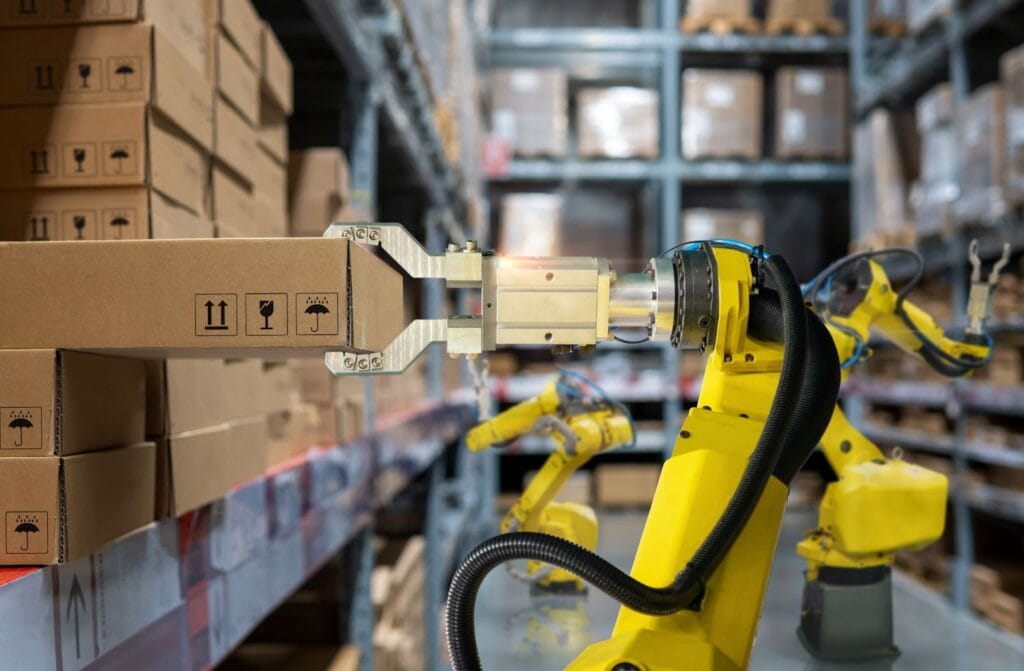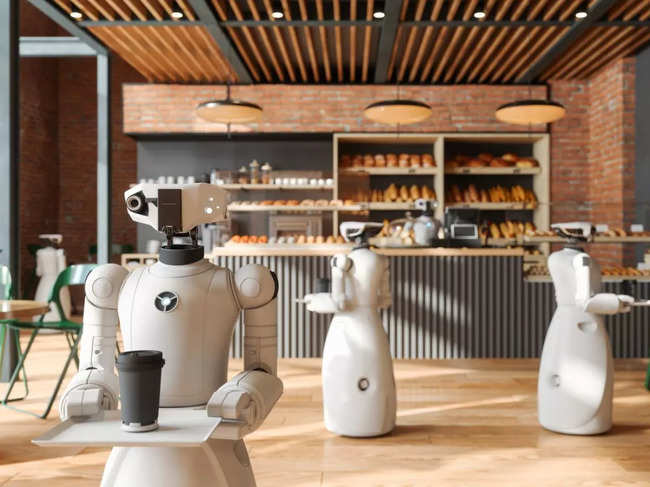From auto plants to
Amazon fulfillment centers, robots are playing an increasing role in manufacturing and supply chain operations. Automated systems can assemble products, move materials, pack shipments, and perform other repetitive tasks more quickly, safely, and cost-effectively than human workers.
Industrial robots now perform the work of about 1.6 million humans globally, according to an Oxford Economics study. As technology improves, factories across sectors are likely to become even more automated.

But it’s not just industrial robots -
automation through sophisticated software and AI is transforming service industries as well.
Over 40% of U.S. jobs in food service, transportation, and retail sectors could become automated in the next 15-20 years per a McKinsey analysis. McDonald’s and Starbucks are rolling out automated order-taking kiosks. Automated cashiers are checking out shoppers at Amazon Go convenience stores and Walmart. Apps can now deliver food, transport passengers, or handle simple legal and medical questions. As natural language processing and predictive algorithms get more advanced, some estimates show
up to 30% of tasks in 60% of occupations could be automated.

While there are concerns over job losses due to disruption, history shows technology has created more jobs than it destroys. The same will likely hold with automation. It may eliminate routine tasks but also create demand for new human roles overseeing automated systems, handling exceptions, and managing operations.
The future workplace will see humans and ever-smarter machines working together - quite literally hand in hand in the case of collaborative robots designed to safely interact with people.
Rather than a threat, increasing automation presents opportunities to make businesses more efficient and people more productive.
 But it’s not just industrial robots - automation through sophisticated software and AI is transforming service industries as well. Over 40% of U.S. jobs in food service, transportation, and retail sectors could become automated in the next 15-20 years per a McKinsey analysis. McDonald’s and Starbucks are rolling out automated order-taking kiosks. Automated cashiers are checking out shoppers at Amazon Go convenience stores and Walmart. Apps can now deliver food, transport passengers, or handle simple legal and medical questions. As natural language processing and predictive algorithms get more advanced, some estimates show up to 30% of tasks in 60% of occupations could be automated.
But it’s not just industrial robots - automation through sophisticated software and AI is transforming service industries as well. Over 40% of U.S. jobs in food service, transportation, and retail sectors could become automated in the next 15-20 years per a McKinsey analysis. McDonald’s and Starbucks are rolling out automated order-taking kiosks. Automated cashiers are checking out shoppers at Amazon Go convenience stores and Walmart. Apps can now deliver food, transport passengers, or handle simple legal and medical questions. As natural language processing and predictive algorithms get more advanced, some estimates show up to 30% of tasks in 60% of occupations could be automated. While there are concerns over job losses due to disruption, history shows technology has created more jobs than it destroys. The same will likely hold with automation. It may eliminate routine tasks but also create demand for new human roles overseeing automated systems, handling exceptions, and managing operations. The future workplace will see humans and ever-smarter machines working together - quite literally hand in hand in the case of collaborative robots designed to safely interact with people.
While there are concerns over job losses due to disruption, history shows technology has created more jobs than it destroys. The same will likely hold with automation. It may eliminate routine tasks but also create demand for new human roles overseeing automated systems, handling exceptions, and managing operations. The future workplace will see humans and ever-smarter machines working together - quite literally hand in hand in the case of collaborative robots designed to safely interact with people.










